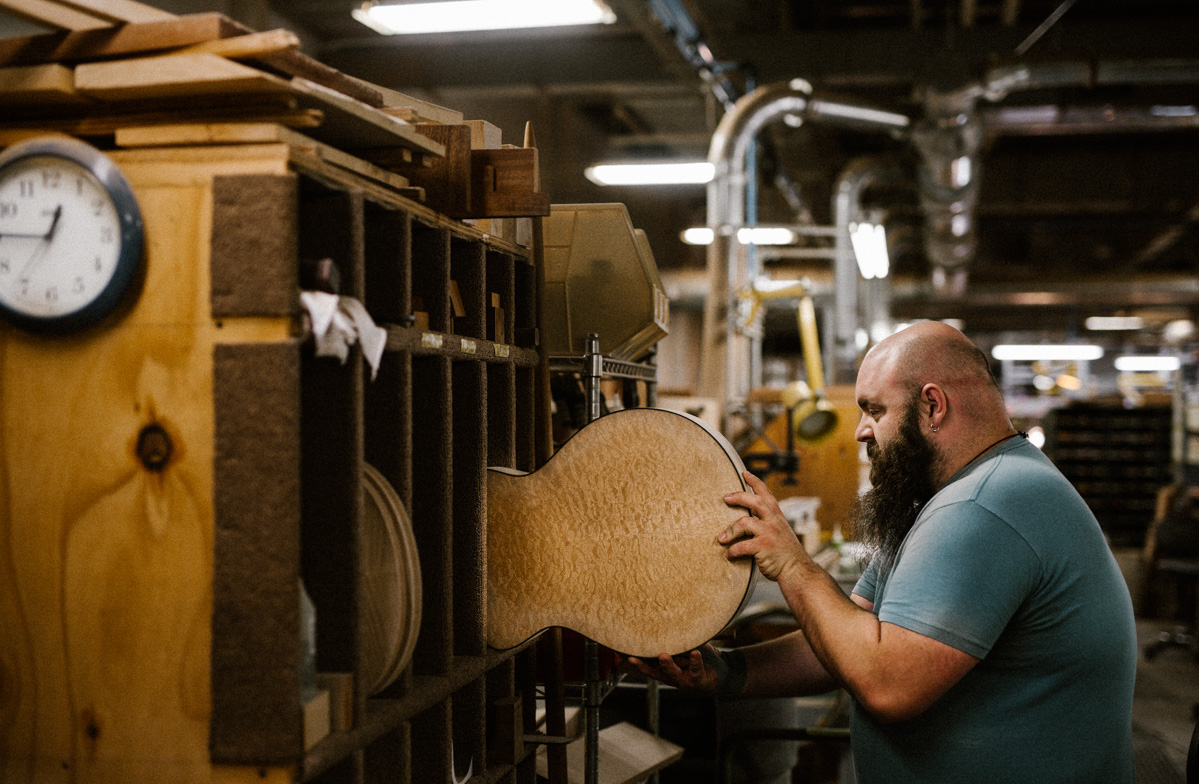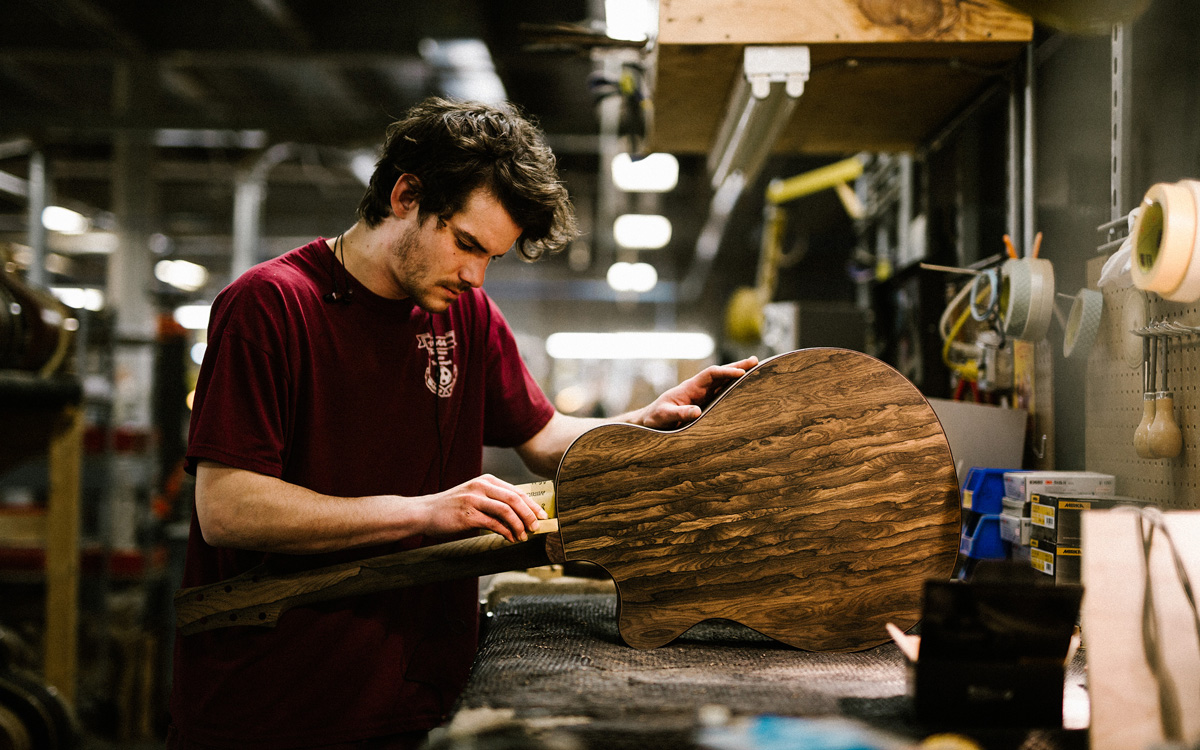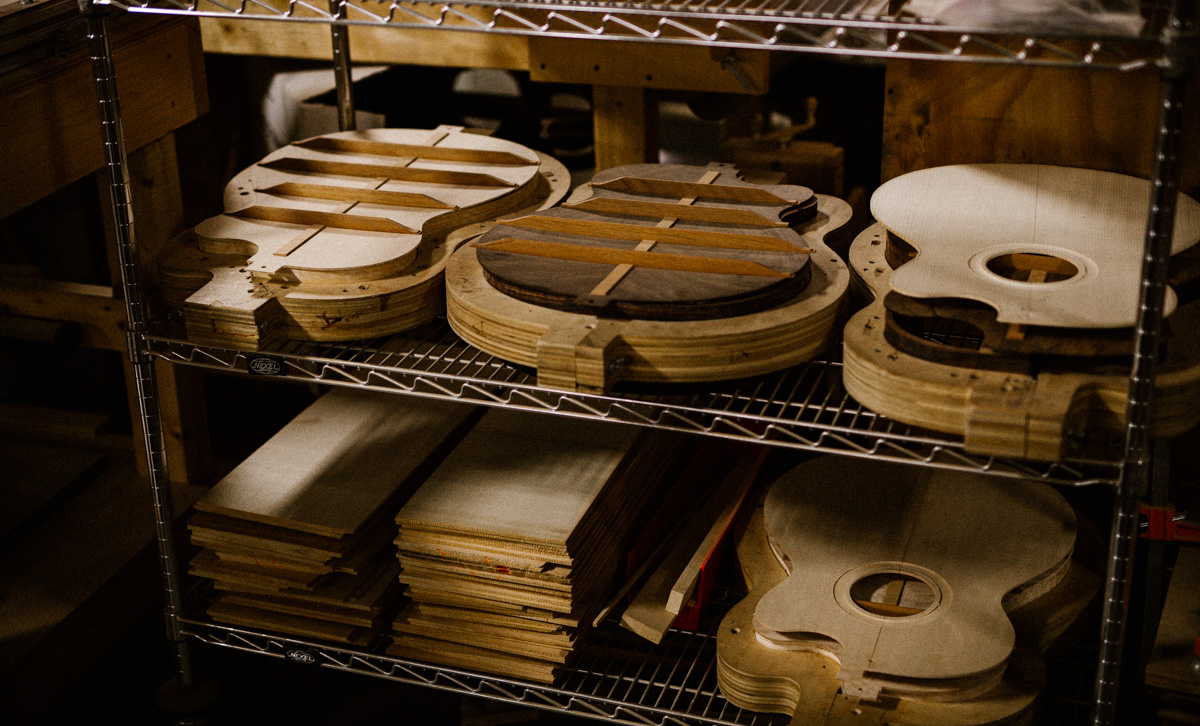Meet The Builders: Private Stock Acoustics
09 Jun 2017
The PRS Private Stock Acoustic project began in 2009 and since its inception has operated as an independent crew. Like any PRS Private Stock instrument, our acoustic guitars are built with an extraordinary attention to detail and a small-shop mentality.
The Private Stock Acoustic team is a tight-knit crew, professionally educated and trained to build heirloom quality instruments by hand. Each Private Stock acoustic takes between 70-90 hand hours to create, is individually numbered, and finally play tested by Paul Reed Smith himself. The team builds an average of 2-3 finished guitars a month with a build time of approximately 6 months.
We sat down with the three members of our acoustic team to learn more about the inner workings of the department and life as an acoustic guitar builder.
The Private Stock acoustic team is (L to R): Joey Lambert (Acoustic Luthier), Paul Miles (Director), and Austin Harris (Acoustic Luthier).

--
Q&A
PRS: What special skills are required of an acoustic luthier versus an electric guitar builder?
Paul M: The neck and body construction is quite different on an acoustic than it is on an electric. We try to share as many jigs and fixtures as we can, but at the end of the day these acoustic guitars are mostly hand built. That said, it does take special skills to build an acoustic guitar, both Joey and Austin came from luthierie schools where they honed their chops in hand building acoustic guitars. When they aren’t building acoustics, their skills are also transferable to electrics.
Joey L: The sound design for an acoustic instrument lay almost entirely in the very fine details of how that instrument is braced, shaped, and how the wood is cared for. Without the added element of electronics, a great deal of attention must be payed to those little intricacies to really get that sound you’re looking for. Sometimes that can require an incredible deal of patience to achieve.
Austin H: Patience and an eye for detail. Tuning each part of the guitar as they come together is a skill that only time and practice can teach you.
PRS: What are your responsibilities as a member of the team?
Paul M: I oversee all acoustic operations as well as spec out and design custom configurations and inlay.
Joey L: I’m responsible for everything going on inside and outside the body of the instrument. Including bending the sides, bracing the top / back / sides, finish sanding, and any special aesthetic accoutrements such as rosette designs and inlays.
Austin H: I’m responsible for all the neck work from beginning to end. Picking the neck wood, hand setting the necks to the bodies, shaping, leveling the fretboard, fretting and finally assembly of the neck and body.

PRS: What inspired you to build guitars as a career?
Paul M: I was young and needed a job right out of college, 25 years later and here we are.
Joey L: I was in college studying both art and music, flip-flopping majors, and having a really difficult time deciding which career to pursue. I learned there were schools to study lutherie and figured it would be the best of both worlds. I applied to Roberto-Venn and got a job with PRS 2 months after I graduated.
Austin H: I never wanted to be stuck behind a desk. I always loved woodworking and guitars, so when I heard there was a school that taught lutherie, I jumped at the chance and was enrolled at Bryan Galloups’ school of lutherie.
PRS: What’s the most rewarding aspect of your job?
Paul M: Watching an instrument go from a pile of wood to a piece of art. Now do that with people you really enjoy being around…it doesn’t get much better than that.
Joey L: Seeing the wood come to life under finish when its almost completed is pretty incredible. Also, getting to play and hear the individual voices of each guitar in their unique combinations of wood is pretty lovely.
Austin H: I will always enjoy holding a piece of raw unprocessed wood and watching it get changed into something beautiful.

PRS: Customers ordering a Private Stock Acoustic have their choice of a large selection of woods, do you have a favorite combination?
Paul M: My favorite creations tend to be our latest builds, we try to go outside of the box with each new build.
Joey L: Any really rustic combinations I like alot.. Macassar Ebony, Koa, Cocobolo, Sitka. Pretty browns, deep reds, and purples.
Austin H: I think that Cocobolo and African Blackwood are amazing choices for backs and sides, while Sitka and Cedar sound beautiful for tops.

PRS: What do you think sets a PRS acoustic apart?
Paul M: Having a small team enables you to really go after that boutique, hand-built vibe. And since we are under the Private Stock department umbrella, we're able to go after the exotic woods and wild colors traditionally uncommon in the acoustic world.
Joey L: There’s a lot more hand work to our instruments than people may believe, or how other large companies produce their acoustics. It allows us a level of intimacy with each instrument to really get to know it and what it needs to live up to its full potential as an end result.
Austin H: I think it all comes down to how much hand work and detail go into each one. We have very high standards and each guitar is tuned to give its own voice and personality.
—

--

